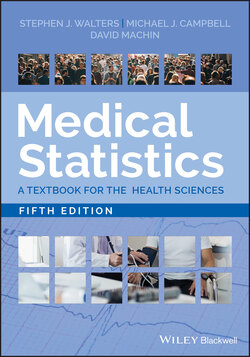Читать книгу Medical Statistics - David Machin - Страница 33
Measured or Numerical Continuous
ОглавлениеSuch data are measurements that can, in theory at least, take any value within a given range. These data contain the most information, and are the ones most commonly used in statistics. Examples of continuous data in Table 2.1 are age, size of index corn, visual analogue scale (VAS), pain score and EQ‐5D tariff.
However, for simplicity, it is often the case in medicine that continuous data are dichotomised to make binary data. Thus, diastolic blood pressure, which is continuous, is converted into hypertension (>90 mmHg) and normotension (≤90 mmHg). This clearly leads to a loss of information. There are two main reasons for dichotomising data. It is easier to describe a population by the proportion of people affected, for example, the proportion of people in the population with hypertension is 10%. Further one often has to make a decision: if a person has hypertension, then they will get treatment, and this too is easier if high blood pressure has been categorised.
One can also divide a continuous variable into more than two groups. For example, we could divide age into age bands of equal lengths of, say 10 years such as: 0–9; 10–19; 20–29, etc. When categorising continuous data authors should give an indication as to why they chose these cut‐off points, and a reader has to be very wary to guard against the fact that the cuts may be chosen to make a particular point. Some statisticians have termed the habit of categorising continuous variables as ‘dichotomania’, which they regard as poor practice since it loses information and assumes a discontinuous relationship that is unlikely in nature.
